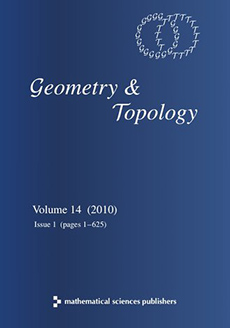Abstract
A complex manifold of dimension is said to be –complete for some if it admits a smooth exhaustion function whose Levi form has at least positive eigenvalues at every point; thus, –complete manifolds are Stein manifolds. Such an is necessarily noncompact and its highest-dimensional a priori nontrivial cohomology group is . In this paper we show that if , is even, and has finite topology, then every cohomology class in is Poincaré dual to an analytic cycle in consisting of proper holomorphic images of the ball. This holds in particular for the complement of any complex projective manifold defined by independent equations. If has infinite topology, then the same holds for elements of the group , where is an exhaustion of by compact smoothly bounded domains. Finally, we provide an example of a quasi-projective manifold with a cohomology class which is analytic but not algebraic.
Citation
Franc Forstnerič. Jaka Smrekar. Alexandre Sukhov. "On the Hodge conjecture for $q$–complete manifolds." Geom. Topol. 20 (1) 353 - 388, 2016. https://doi.org/10.2140/gt.2016.20.353
Information





